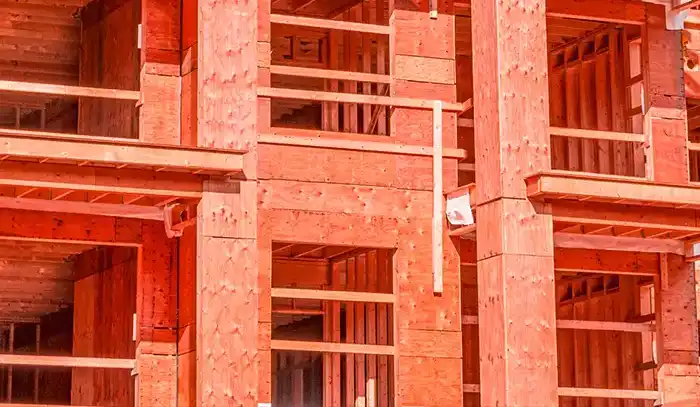Fire Treated Wood vs Pressure Treated Wood: Key Differences
They may sound similar, but fire treated wood and pressure treated wood serve very different purposes. Choosing the wrong one for your project could be a costly mistake.
Why Builders Choose Fire Treated Wood for Multifamily Projects
When building multifamily housing, safety and code compliance are non-negotiable. At the same time, builders need materials that are cost-effective, durable, and straightforward to work with during framing. That’s why many developers and contractors are turning to fire treated wood (FRTW) in apartments and multifamily housing projects as a reliable solution that balances safety, budget, and performance.
What Is Fire Treated Wood?
Fire treated wood is lumber that has been pressure-impregnated with fire-retardant chemicals and then kiln-dried, providing enhanced resistance to ignition and flame spread. In the event of a fire, FRTW chars at a much slower rate than untreated wood, reducing flame spread and contributing to safer evacuation and fire control.
Meeting Codes While Maintaining Design Flexibility
The International Building Code (IBC) permits the use of fire treated wood in many multifamily housing applications, including:
- Load-bearing and non-load-bearing wall assemblies in Type III construction
- Roof sheathing and roof framing in multifamily structures
- Soffits and overhangs where fire rating is required
- Stairway enclosures and exit passageways
- Partition walls between units
By using fire treated wood in multifamily housing, builders can often maintain wood-framed construction methods while meeting the fire safety requirements of local codes, reducing the need for more costly non-combustible framing materials.
Benefits of FRTW in Apartments and Multifamily Housing
- Enhanced Fire Safety
FRTW reduces flame spread and smoke development, giving residents and first responders more time in an emergency. - Code Compliance with Familiar Framing
Builders can keep the efficiencies of wood framing while complying with fire safety requirements for multifamily housing, supporting project timelines and budgets. - Cost Efficiency
Compared to steel or concrete, FRTW offers significant cost savings while meeting fire code standards. - Design Flexibility
FRTW can be cut, drilled, and handled like conventional wood, making it easier for crews to work with on complex multifamily builds. - Long-Term Performance
Properly treated and installed FRTW retains its fire retardant properties for the life of the structure, adding value and peace of mind for owners and tenants.
FRTW in Sustainable Multifamily Development
In addition to safety and cost efficiency, fire treated wood aligns with sustainable building goals. Wood is a renewable resource, and many multifamily projects are using FRTW to help achieve green certifications while maintaining safety standards.
Choose Confidence in Your Multifamily Projects
At Biewer Lumber, we supply high-quality fire treated wood for multifamily housing projects to help builders meet code, maintain construction efficiency, and prioritize resident safety. We’re committed to supporting your multifamily builds with consistent quality, knowledgeable service, and on-time delivery.
Ready to integrate FRTW into your next multifamily project?
Contact Biewer Lumber today to learn more about fire treated wood for multifamily housing and apartment builds.
